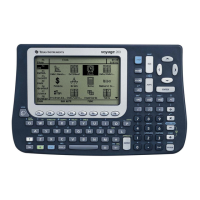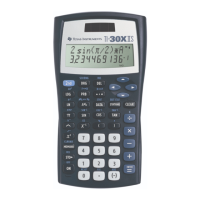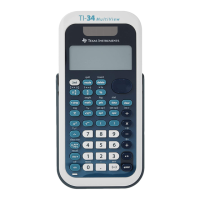Additional Graphing Topics 469
Additional Graphing Topics
Additional Graphing TopicsAdditional Graphing Topics
Additional Graphing Topics
Collecting Data Points from a Graph
Collecting Data Points from a GraphCollecting Data Points from a Graph
Collecting Data Points from a Graph
From the Graph screen, you can store sets of coordinate values and/or math results for
later analysis. You can store the information as a single-row matrix (vector) on the Home
screen or as data points in a system data variable that can be opened in the Data/Matrix
Editor.
Collecting the Points
Collecting the PointsCollecting the Points
Collecting the Points
1. Display the graph. (This example shows
y1(x)=5ùcos(x).)
2. Display the coordinates or math results you want to collect.
3. Save the information to the Home screen or the
sysData variable.8 H (Home screen)
or 8
D (sysData variable)
4. Repeat the process as necessary.
Note: To display coordinates or math results, trace a function with … or perform an
‡
Math operation (such as Minimum or Maximum). You can also use the free-
moving cursor.

